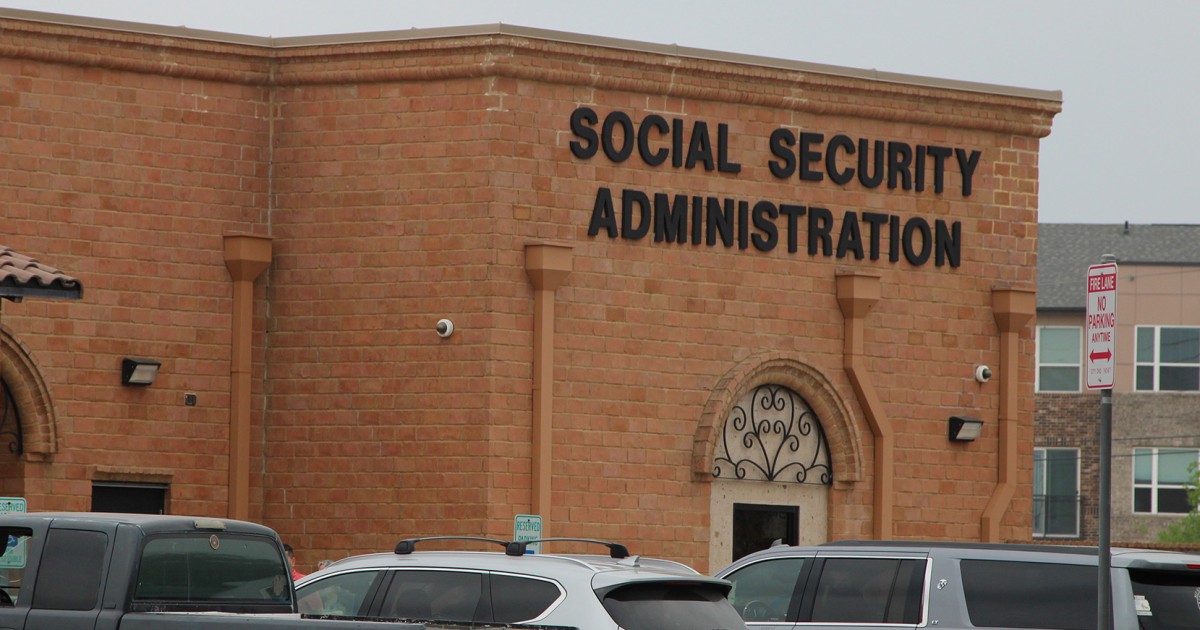Many of the president’s claims were misleading and ignored months of turmoil at the embattled agency.
President Donald Trump marked the 90th anniversary of Social Security on Thursday with an Oval Office signing of a proclamation that the safety net was “more resilient than ever before,” thanks to him. He claimed improvements to the program’s customer service. He also misleadingly declared that he had checked off his campaign promise to eliminate taxes on benefits for seniors.
But Social Security is barreling toward insolvency faster than before because of Trump’s tax bill and immigration policies, according to experts. The agency has faced tumult since the U.S. DOGE Service came in with a grand scheme to root out fraud and overhaul the program, causing disruptions and frustrations within the agency.
And despite the repetition of “no tax on Social Security” from Trump and his allies, the law ultimately signed by the president did not eliminate taxes on seniors’ benefits.
The Oval Office event — largely ceremonial — offered the president a chance to repeat his commitments to older Americans on the anniversary of President Franklin D. Roosevelt signing the Social Security Act into law. Trump was joined by Commissioner Frank Bisignano, who has led the agency since May.
“I made a sacred pledge to our seniors that I would always protect Social Security, and under this administration we’re keeping that promise and strengthening Social Security for generations to come,” Trump said.
However, Republicans have not yet provided a solution to put off Social Security’s impending shortfalls.
Natalie Ihrman, a Social Security spokeswoman, said the agency is “committed to working with Congress and other stakeholders to strengthen these vital SSA programs and continue to provide secure retirement and support in times of disability for millions of Americans.”
The trust fund will be insolvent by 2033, the program’s trustees said in June, if Congress doesn’t act. And after the passage of Trump’s One Big Beautiful Bill, the chief actuary said the law could hasten Social Security’s insolvency date.
In addition, experts have warned that Trump’s efforts to deport undocumented immigrants — who pay into the system but are barred from receiving benefits — will further deplete the program.
Penn Wharton’s budget model has projected that if the government deports 10 percent of undocumented immigrants annually over the next 10 years, Social Security will lose $133 billion in funds over that period of time.
In his comments Thursday, Trump repeated a baseless claim that immigrants were getting benefits and asserted that nearly 275,000 immigrants were removed from the agency’s rolls. The agency did not provide information about the president’s claims that immigrants were getting benefits, but it said, “SSA updated the Social Security records of about 275,000 individuals no longer holding legal status, ensuring people ineligible to receive benefits are not improperly paid.”
Most federal public benefits — such as Social Security — are available only to U.S. citizens and certain categories of legal immigrants.
Trump also praised himself for keeping a campaign promise to eliminate taxes on Social Security.
“I signed One Big Beautiful Bill and allowed no tax on Social Security for our great seniors,” Trump said.
But the law didn’t create an exemption on taxes on Social Security benefits. It added a temporary $6,000 deduction for seniors who earn as much as $75,000 a year, or $12,000 for joint filers earning as much as $150,000.
Ihrman of SSA said the law “provides historic tax relief to America’s seniors.”
The White House Council of Economic Advisers estimates that 88 percent of older adults will not pay taxes on their benefits because of the bill, up from 64 percent under previous law.
Howard Gleckman, senior fellow at the nonpartisan Tax Policy Center, said the council’s estimate relies on the assumption seniors would use their standard deduction to reduce their tax liability on Social Security benefits rather than their total income. The policy center has estimated that about half of recipients will pay at least some income taxes on their benefits.
“What he’s saying is just wrong,” Gleckman said of Trump’s claim.
Trump and Bisignano also touted achievements in customer service, specifically claiming recent reductions in wait times for the 1-800 phone line and at field offices as well as the elimination of scheduled maintenance times for the website.
Bisignano came into the agency in May after the cost-cutting U.S. DOGE Service implemented changes that led to customers complaining of dropped calls, the website repeatedly crashing and thousands of workers leaving the agency.
One of Bisignano’s early efforts to address the overwhelmed phone line was to move field office workers to answer calls.
Advocates have said it is harder to tell what customer service is like since the agency has taken down many of its public-facing performance metrics.
To trumpet the phone performance, the agency has said it reduced the “average speed to answer,” which does not count the time callers wait for a call back, even though the agency rolled out the callback feature last year.
The agency also said it cut wait times at field offices, a statistic repeated by Trump on Thursday.
That is misleading, according Jessica LaPointe, president of Council 220 of the American Federation of Government Employees. After the agency rolled out a new system of assigning appointments to people walking into field offices in December, the time people wait in the lobby of field offices went down because they were no longer getting their issues handled when they showed up.
“Now you wait 20 minutes in the lobby to get to the window and then you’re given an appointment and you are waiting then months to get your business finished, from start to finish,” LaPointe said.

https://www.washingtonpost.com/politics/2025/08/14/trump-social-security-90th-annniversary
Also here:

https://www.msn.com/en-us/news/politics/ar-AA1Ky5eX


